Make an Impact
Whatever skills, knowledge or time you have to volunteer, you can play a vital part in this process. All we need is your passion.
As we celebrate Earth Day, it’s crucial to recognize the urgent need for shelter in our changing climate. We must protect both our planet and the people living on it. Climate change is driving more frequent and intense disasters, displacing millions every year. For those forced to flee their homes, shelter is the foundation for recovery, dignity, and resilience.
Extreme weather events – floods, droughts, hurricanes, cyclones, and wildfires are devastating communities at unprecedented levels. In 2023, over 43 million people were displaced due to climate-related disasters.
Without safe shelter, families face increased exposure to harsh conditions, disease, and insecurity, especially in the aftermath of a crisis. Protecting vulnerable communities means ensuring they have secure and sustainable housing.
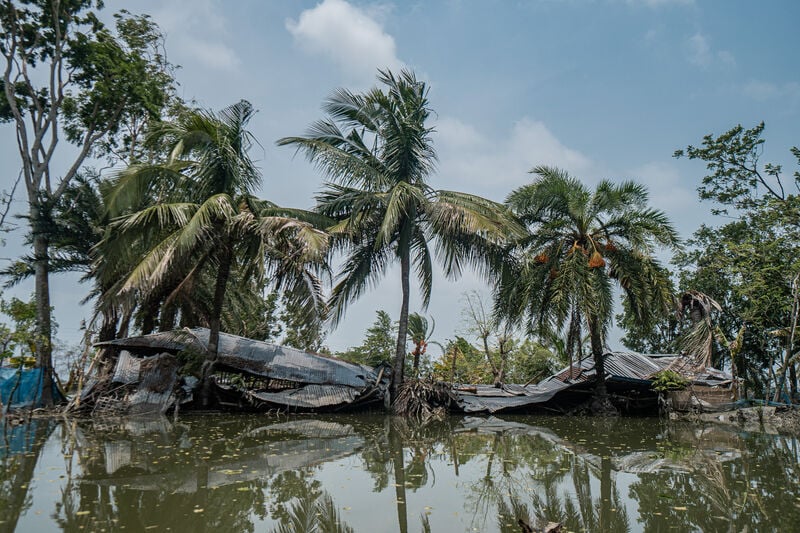 Floods in Bangladesh after Cyclone Remal. Credit: Uttaran.
Floods in Bangladesh after Cyclone Remal. Credit: Uttaran.
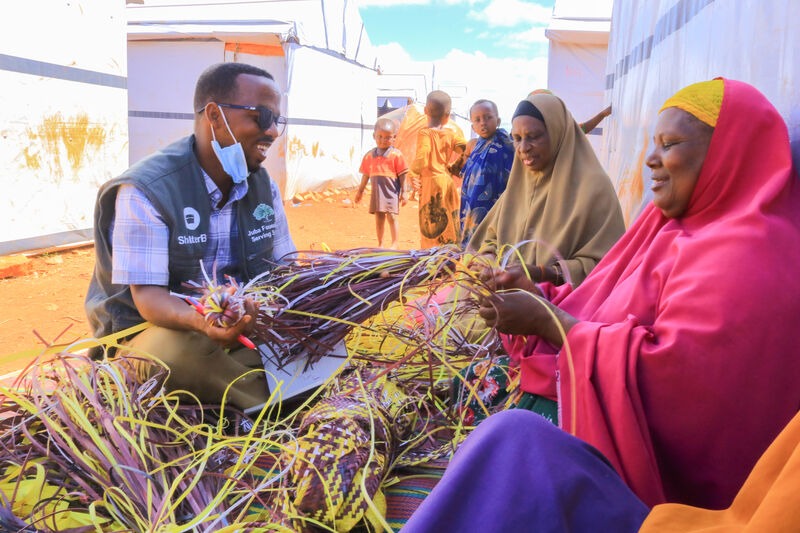
Women transforming old and discarded tarpaulin packaging and plastic bags into mats, vases, baskets, and handbags, in Somalia.
Along with our partners, we are first responders in the climate crisis, delivering emergency shelter solutions for families who have lost everything. Our approach is designed to adapt to environmental challenges, including:
In 2024, we took major strides towards reducing our environmental impact and making aid delivery more sustainable.
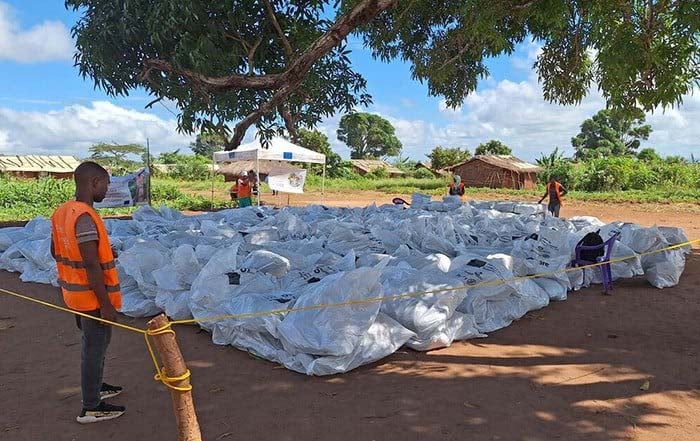 Recycled aid materials in Mozambique as part of an environmental sustainability project.
Recycled aid materials in Mozambique as part of an environmental sustainability project.
The team, in our recent Morocco earthquake response, explored ways to reduce our environmental impact.
We need our aid items to keep in good condition while in transit, so some packaging is necessary. This usually consists of plastic strapping, bags, polypropylene woven sheets, and cardboard boxes. And aid is transported on wooden pallets.
In Morocco, we had over 330 wooden pallets in our warehouse in Marrakech. We didn’t want them to be thrown away or cause issues for the village communities we were supporting. With some research and thanks to one of our partners, Le Foundation Grand Atlas, these items were put to good use.
Habiba Guonaine (pictured) from a women’s association in Marrakech arranged for the plastics to be taken to a recycling center. They were ground down and made into pellets. The pellets were used to create new items, like kitchen utensils, bottles for cleaning supplies, and trash bags.
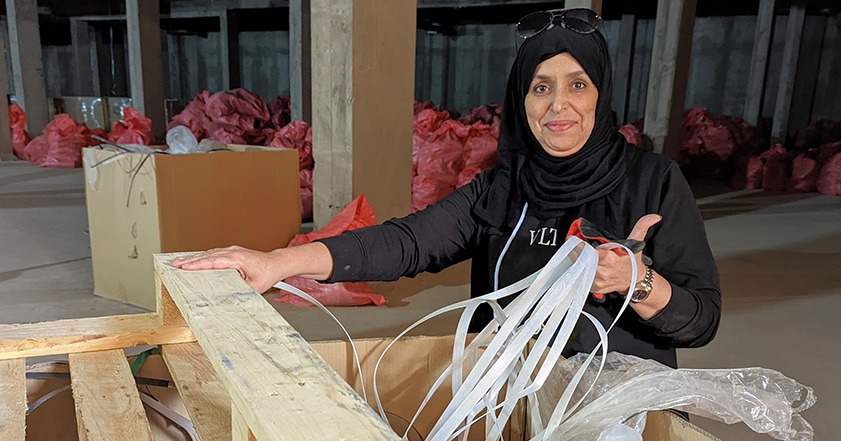
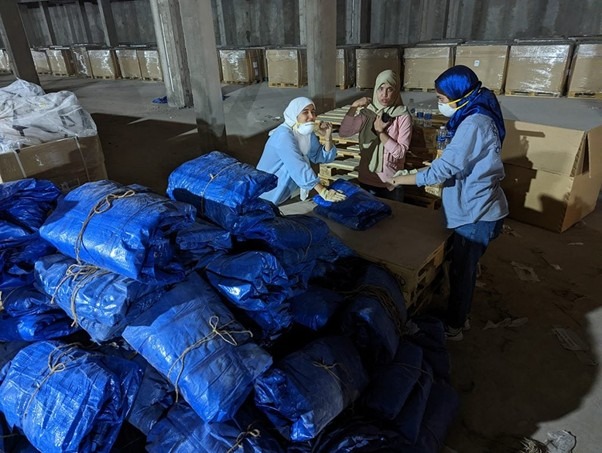
Some of the pallets and cardboard were used by the women’s association for the people who were working within the foothills of the Atlas Mountains. The pallets were used as flooring in shelters. They keep mattresses off the cold and muddy ground when it rains. The cardboard helped insulate the single-walled tents some people had been living in since the earthquake. The polypropylene woven sheets were used to patch up shelters. They also helped keep groundwater and mud out of tents.
Along with the women’s association, the Rotary Club of Majorelle made use of a further 100 pallets. These helped keep furniture and bedding off the ground and insulated from the cold.
These simple initiatives not only reduce waste. They also helped to keep families warm and dry at a time of year when temperatures plummet in the mountains and snowfall is common.
Somalia continues to face unrelenting climate shocks, political instability, and economic hardship—an ongoing humanitarian crisis that leaves families in a constant state of recovery. Torrential floods routinely wash away farmland, homes, and livelihoods, forcing hundreds of thousands to flee in search of safety.
In partnership with the Juba Foundation, we provided 2,600 households with essential toolkits and durable tarpaulins to help shield families from both the devastating rains and the searing sun.
But the impact didn’t stop there. In a powerful display of resilience and creativity, community members have begun repurposing the straps from tarpaulin bales, transforming them into beautifully woven baskets. What was once simply packaging is now a symbol of ingenuity and hope, reinforcing the idea that even in crisis, resourcefulness can thrive.
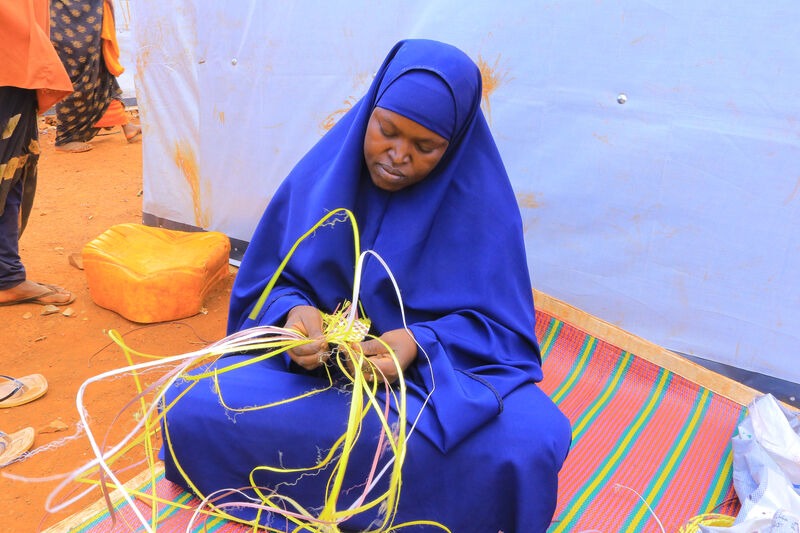
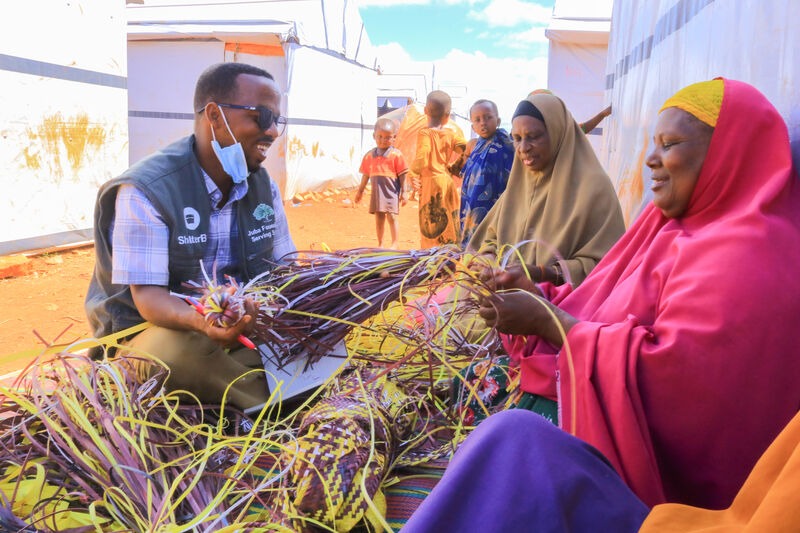
One staff member from the Juba Foundation shared,
People are making baskets to order, and the demand is growing. Some even receive orders from outside the camp. This new skill has brought a fresh income stream to many.”
This innovative repurposing provides vital protection and diverts waste from landfills. While also creating new economic opportunities for the community.
Typhoon Rai, known locally as Oddette, devastated many areas of Cebu in the Philippines in December 2021. Many homes were damaged, including Kuya Francisco’s.
ShelterBox sheltered over 7,000 families with sheet metal roofing, tools, shelter kits, tarpaulins, and solar lights.
Kuya Francisco’s son helped to collect the waste tarpaulin packaging and gave it to Kuya Francisco to sew. They made one large sheet, which he passed on to other communities in need.
As the community gradually recovered, some families, including Kuya Francisco’s neighbors, found they no longer needed the tarpaulins. Rather than letting these go to waste, he collected them and stitched them together to create larger sheets. These were then repurposed into sheds for fellow fishermen who had also been affected by the typhoon.
Kuya Francisco didn’t stop there. He recognized the ongoing struggles of other households. He gave the sewn sheeting to these families who had not fully rebuilt their homes. This helped them improve their temporary shelters.
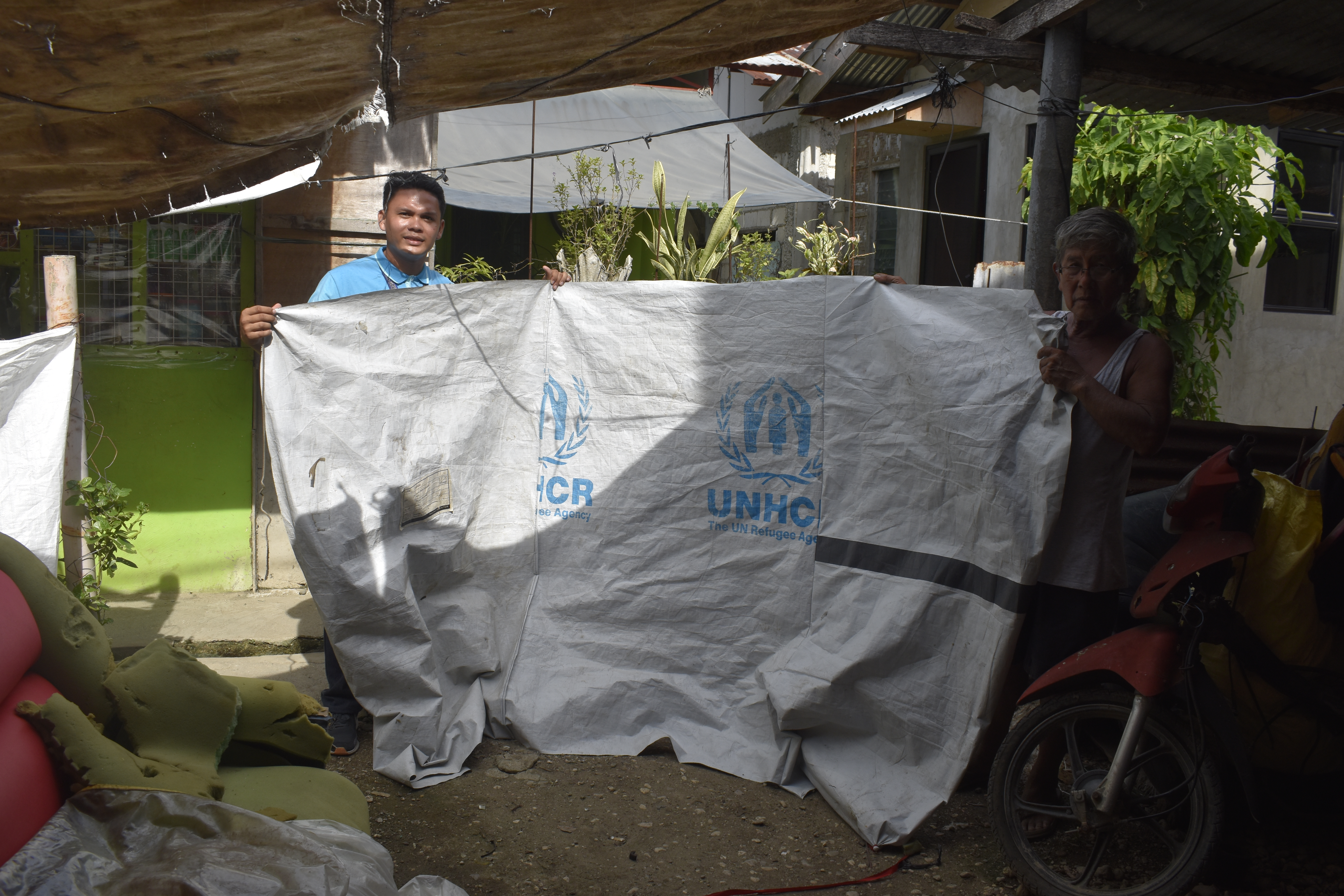
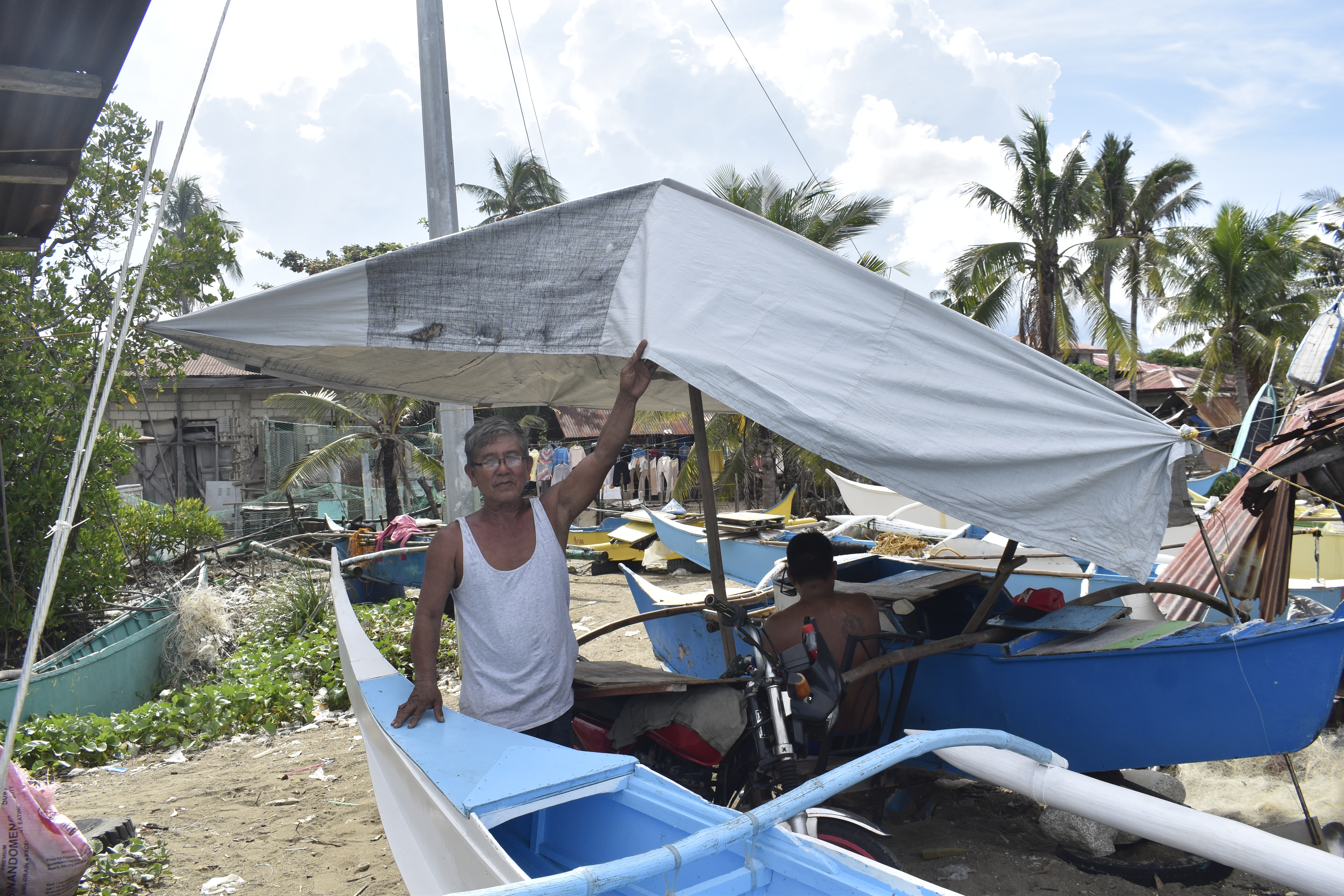
Kuya Francisco said,
Instead of letting the tarpaulins go to waste, I thought, why not sew them together and create something bigger that could help others? It’s a way to give back and support those who need it the most.”
Kuya Francisco’s story is a testament to community spirit. By repurposing materials he no longer needed, he continued aiding his community long after the storm had passed.
When we support communities after disaster, we aim to avoid adding to the challenges people are already facing. This aligns with the ‘do no harm’ principle. We’re committed to minimizing any environmental impact on affected communities.
As part of this, we want to reduce the amount of waste from our aid materials. However, aid items like tarpaulins need to be wrapped during shipping to protect them. In Mozambique, our partner CARE Mozambique has been giving aid packaging a new life.
CARE Mozambique set up a committee to develop ways to reuse aid waste. The committee collects plastic tarpaulin bags and baling straps, which can be used to improve shelters. These are then offered to families where the need is greatest.
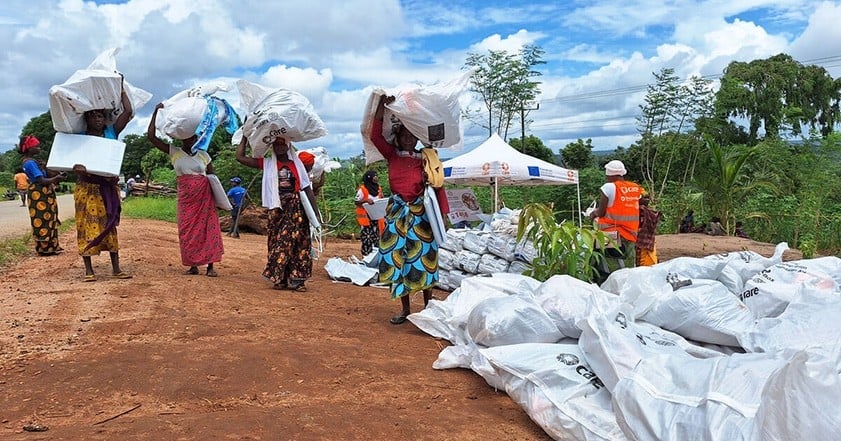
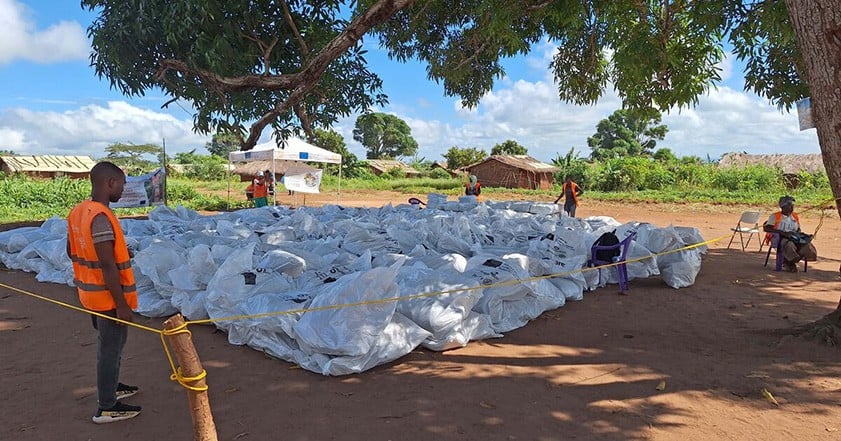
Some tarpaulin packaging and straps are being used to create walls and doors for toilets in Macomia. Women said that they had faced harassment when using the toilet. It’s hoped that the added walls and doors will offer more privacy and reduce such incidents. It’s a great example of how reusing waste can help a community.
Members of a Women and Girls Safe Space have been reusing waste materials by turning leftover bags and tarpaulins into carpets. They also plan to create items like baskets and footballs from these materials. One person has been repurposing pallets and bale strapping from the tarpaulins and weaving them into household items.
Whatever skills, knowledge or time you have to volunteer, you can play a vital part in this process. All we need is your passion.
Featuring the latest news from the field, stories of families who we’ve helped and exciting fundraising campaigns that you can be a part of, you won’t want to miss out.
Donate now to help people who have lost their homes to disaster by providing emergency shelter and essential equipment.